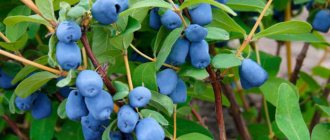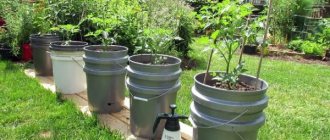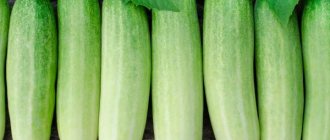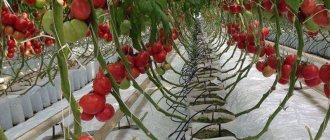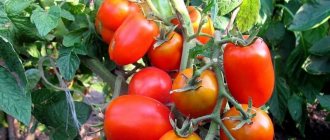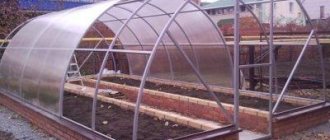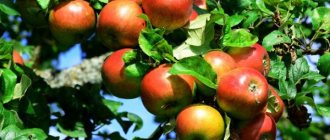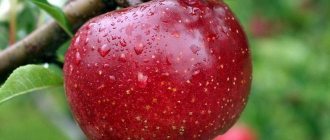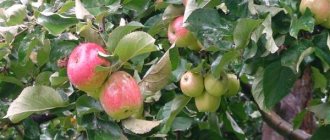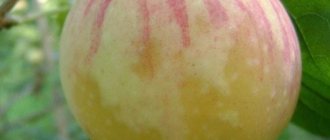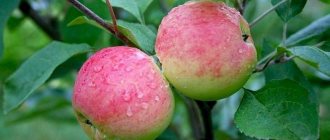Few people know, but the Papirovka apple tree is a White filling; this variety of apple tree is also called the Baltic. As you may have guessed, today we will talk about White Filling. These apples are always eaten with pleasure by both adults and children. Their taste is simply amazing. And the unsurpassed aroma is familiar to everyone since childhood. This variety is an early ripening crop. The variety is widespread in many regions of Russia. However, the Baltic region is considered the birthplace of this apple tree. Papirovka has been included in the State Register for a long time; it is recommended to be grown in many regions of Russia; this crop belongs to the early summer varieties. It is not recommended to grow this apple tree in the East Siberian, Ural and Far Eastern regions. This variety is loved to be grown both in personal plots and in collective gardens and industrial centers. Apple trees thrive in areas located in suburban areas, so gardeners are showing unprecedented interest in this variety. The apple tree adapts well to external conditions, grows quite intensively, and the fruits form early. That is why people like to grow this variety in suburban areas.
Apple tree variety Papirovka
Papirovka is a popular early summer apple tree variety that is widely popular in breeding. Obtained as a result of natural natural pollination. According to the most common version, this variety comes from the Baltic states, where it was discovered at the beginning of the 19th century. From the middle of the same century, papirovka was cultivated in Germany, Poland, the western part of Russia, as well as in Ukraine and Belarus. The Russian name for the variety “Papirovka” is probably related to the Polish “Papierówka” (paper) and the Ukrainian “Papir” (paper).
Other names for this variety are Pribaltiyskoe and Alabaster. However, most gardeners know Papirovka under the name White filling. And although many experts and scientists believe that Papirovka is the same White filling, controversy on this issue has not subsided for almost a century. And today there is no consensus on this matter among scientists. Such well-known domestic breeders as Michurin I.V., Kedrin S.P., Chernenko S.F., Rytov M.V. and Grebnitsky A.S. described in detail in their personal works the main differences between Papirovka and White filling. In general, these are two very similar varieties of apple trees with early summer fruit ripening. However, in appearance, Papirovka apples are larger and have a characteristic, pronounced “seam” on the peel. Also, in terms of taste and commercial qualities, the fruits of Papirovka are valued higher than the fruits of White filling. The indicators of scab susceptibility in Papirovka are somewhat lower, but the winter hardiness indicators in the trees of Beloye Nalivka are higher. There are also differences in the leaves: in Papirovka their edges are crenate, while in White Nalivka they are serrated.
In Russia, Papirovka has become the leading early summer variety in many regions. It is included in the State Register almost everywhere in our country, with the exception of only 3 regions - the Ural, East Siberian and Far Eastern. Due to the early ripening and low transportability of the fruit, Papirovka is cultivated mainly on private plots and garden farms (including collective gardens), which are located near cities and industrial centers.
Apple trees grow to medium size, although they exhibit intensive growth at a young age. Young trees have a rather wide, pyramidal crown, but as they grow, it gradually takes on a rounded shape. The color of the bark on the main branches and trunk is light, gray. Mostly ringed flowers bear fruit.
The shoots are brownish-olive in color, of medium thickness, with strong pubescence. The lentils are elongated, white, and sparsely located. Vegetative buds are small, flat, grayish in color, slightly flattened in shape. The leaves are medium-sized, gray-green, almost matte, highly fleecy (especially on the inside), elliptical or ovoid in shape, with finely crenate edges, without curves, strongly folded in the middle part of the shoot, the tips of the leaves are raised upward in the form of “spoons.” The bases of the petioles can be pale colored or completely uncolored; the petioles themselves can be long or medium in size. In nursery conditions, Papirovka can produce tall annuals with a small number of side shoots; the bark on them is light chestnut in color with a slight sheen.
The flowers are large in size, saucer-shaped, pink buds, petals are predominantly white, but may be slightly pinkish, oblong in shape, with slightly raised edges, closed or overlapping. The stigmas of the pistils are at the same level as the anthers or slightly higher.
In general, the fruits grow to a medium size, with the largest apples found on young trees and the smallest on older apple trees. The average weight of an apple is 80 - 100 grams, but with proper care, young apple trees often produce not only medium-sized fruits, but also larger ones, weighing up to 150 - 180 grams. The shape of the fruit is slightly flattened, often round-conical, less often flat-conical or higher, round-cup-shaped. Typically, Papirovka apples are of heterogeneous shape, with clearly visible ribs (the ribs are quite wide). The largest fruits often take a triangular shape. Apples of this variety can be distinguished by a noticeable thin seam running vertically along the skin of the fruit (in the form of a sharp longitudinal fold). Sometimes there are several such seams on one apple. The color of Papirovka fruits is pale, greenish-yellow, without traces of blush. During the period of removable ripeness, a thin, whitish coating forms on the apples. Subcutaneous dots are quite large in size and are present in large numbers; their color can be greenish or whitish. The skin of the fruit is very tender, thin, dry, and smooth. The stalks are medium-sized or long. The funnel is of medium size in width and depth, slight rustiness is allowed. The saucer is small and narrow. The cup is closed. The subcup tube is short and cone-shaped. The seed nest is large, bulbous in shape. The seed chambers are large and can be open or semi-open into an axial cavity. The seeds are irregular, angular in shape, short, light brown in color.
Despite the lack of outer color, the fruits have an attractive appearance. The apples taste tender, very juicy, with a refreshing sweet and sour taste (with excess acid). The pulp has a slight aroma, is white, tender, loose, and has a coarse-grained structure. In overripe fruits, the pulp becomes mealy and slightly dry. Since Papirovka is an early apple tree, its fruits are consumed primarily fresh. But apples are also used to make juices (containing a high dose of catechins), wines, jams, purees and preserves. According to the chemical composition, the fruits contain a high amount of ascorbic acid (or vitamin C - 21.8 mg/100 g), as well as P-active substances (209 mg/100 g), sugar (9.0%), pectin substances (10 .0%), titratable acids (0.97%).
The most common variety of apple trees in Europe is Papirovka.
The most common variety of apple trees in Europe is Papirovka .
This variety is widely known as White filling .
It acquired its name for the juiciness of its fruits .
But its most important advantage is its early harvest .
Apples of this variety will delight you already at the end of July.
Reviews from gardeners
Yuri, Khmelnitsky
I have had a large apple tree since about 1960-1965. She'll give birth in a year. I planted a couple of new varieties on it. And what do you mean, medium-sized apples? My apples are big.
Source: forum.vinograd.info
Olga, Penza
Due to old age, White filling (Papirovka, Alabaster) has become not a variety, but a variety type - i.e. many varieties.
Source: smoldacha.ru
What type does it belong to?
Apple trees are a summer variety . This variety was bred in the Baltic states and prefers a warm climate.
Apple trees of this variety are among the first to bear fruit. The apples fill with juice and ripen by the end of July .
Ripe fruits hold tightly and do not fall off. They are ready for consumption immediately after collection.
However, the fruits of this variety are poorly preserved . During long-term storage, the pulp becomes loose and loses its taste. Therefore, the maximum shelf life of the fruit in the refrigerator is 1 month.
Description of the variety Papirovka
Externally, the variety is unremarkable, but this is only at first glance. Detailed description and photos below.
Apple trees of this variety are not tall. The shape of the crown of a young tree slightly resembles a triangle; with age, the shape becomes rounded.
The shoots are medium-sized, brown, heavily pubescent.
The leaves are oval-shaped, medium-sized, gray-green.
The leaf blade is heavily pubescent, the tip is slightly raised.
The fruits of this variety are small. The weight of a ripe fruit is approximately 100 grams . The shape of the apple is round, but sometimes it is also conical. The ribs stand out well.
The saucer of the apples is small, the funnel is shallow. The apple's skin is thin and smooth to the touch. The pulp is white, slightly loose, very juicy, sweet and sour in taste.
The fruit itself is green-yellow. Due to their juiciness, apples of this variety are well suited for making juice.
History of selection
Apple trees of this variety were first discovered in the Baltic states at the beginning of the 19th century.
It is generally accepted that this variety was obtained as a result of natural pollination.
However, many famous breeders argued about the origin of this variety.
S.P. described this variety in detail in his works. Kedrin, S.F. Cherenko, M.V. Rytov.
But to this day, debate continues among breeders about this variety.
The main one is the dispute about the similarities between Papirovka and White filling .
Many believe that this is the same variety, because their characteristics are more than similar.
Opponents of this opinion cite as their main argument that Papirovka’s fruit size is slightly larger than that of White filling.
In any case, there is still no consensus on this matter.
Variety varieties
There are several types of Padding, which differ in a number of characteristics.
Semi-dwarf
This is not a separate variety, but an ordinary Papirovka grafted onto a semi-dwarf tree.
Amber
A variety obtained by crossing Papirovka and Yantar.
Baltic
Another name for Padding.
Ural
Hybrid of Papirovka and Ranetka Red. Full name: Ural Liquid.
Summer
Advertising name Papirovka.
Altai
A little-known variety that is often passed off as Papirovka.
Red
Another name for the Uralskoe Nalivnoe variety.
Honey
Has nothing to do with Papirovka. Often passed off by dishonest sellers as Honey Papirovka.
Region of natural growth
The region of natural distribution is the Baltic countries.
The most comfortable climate for it is a moderate continental climate.
This type of climate provides warm, humid summers and not too frosty winters.
The variety is poorly adapted to climate change.
Apple trees of this variety absorb nutrients from the soil.
In order for this process to occur normally, it is necessary to ensure constant soil moisture.
Only sufficiently moist and loose soil will give the tree the opportunity to grow and develop normally.
When adapting to severe frosts, the apple tree
needs feeding.
It is worth fertilizing 2 times a year. The best time for feeding will be spring and autumn.
As a rule, frozen soils are not very rich in nutrients for apple trees, so to improve adaptation to such conditions, the tree should be fed with natural fertilizers.
Mulch the tree trunk circle
| Stage 1. Process the tree trunk circle Loosen the surface around the trunk about once a month. Processing depth is approximately 10 cm. Mulch the soil with peat or humus . This is both a protective layer and additional nutrition for the tree. | |
| Stage 2. Water as needed Carry out work if there is no rain for a long time. Use from 3 to 10 buckets per tree depending on the size. Water in the evening . Pre-settle the water for 24 hours | |
| Stage 3. Apply fertilizers Carry out the first fertilizing in the spring. You can use organic matter, mineral complexes or a mixture. The second application of fertilizers should be carried out during the period of fruit formation.. Feed for the third time in the fall | |
| Stage 4. Trim the crown every year Form a tree in the first years according to the scheme. This sets the future shape of the crown. Every spring, cut out diseased and broken branches . Cover the cuts with varnish. In mature trees, cut off shoots that thicken the crown | |
| Stage 5. Pick apples on time For storage, pick slightly unripe fruits. Be careful, any damage leads to damage. Ripe apples are removed for consumption. In this variety they become lighter |
Productivity
The variety belongs to the summer, high-yielding varieties. The harvest from one tree can reach 50 kilograms of apples.
The harvest period falls at the end of July - beginning of August . The weight of a mature fruit is approximately 100 grams.
Ripe fruits do not fall off, but are poorly stored.
When stored for more than 1 month, the fruits lose their original characteristics. Apples of this variety are very juicy and ideal for making apple juice.
Planting and care
Apple trees of this variety are quite susceptible to growing conditions.
Therefore, when landing, first of all,
it is worth deciding on the correct landing location.
The optimal location for apple trees will be an open, well-lit place, not far from other apple trees.
It is recommended to plant apple trees at a distance of 4-5 meters from each other.
In about a week, the soil in the hole will reach the ideal temperature for the seedling. Before planting, the soil in the hole needs to be slightly loosened. The Papirovka variety should be planted in the spring from late March to mid-April.
The main thing a person can give to an apple tree is proper care. Caring for apple trees should include 3 stages. It is best to start care in March and end in November.
The spring stage of care includes:
- Inspection of the tree.
- Treatment of wounds.
- Pruning damaged branches.
- Feeding the tree.
Summer care includes:
- Regular watering.
- Spraying against pests.
The autumn stage of care is the final stage, it is intended to prepare the tree for winter. Main measures:
- Tree feeding.
- Whitewashing the trunk.
- Pest control if necessary.
Characteristics of the variety
Let's list the advantages of Padding:
- undemanding to soils;
- frost resistance;
- early ripening (in the middle zone apples can be eaten already in the first ten days of August);
- high yield indicator for early summer varieties, calculated over several years;
- good taste of fruits;
- early fruiting (first apples from 3-4 years of age, significant harvest in the 4-5th year after planting).
The disadvantages include:
- poor shelf life of apples (2-3 weeks);
- difficulties in transportation (fruits are easily damaged and then spoil after a few days);
- The harvest differs from year to year of fruiting.
Pests and diseases
The appearance of pests and sickness of apple trees is human fault.
If the apple tree is still exposed to the disease, then control measures should be as follows:
Fungal diseases (powdery mildew, scab, milky sheen). To combat these diseases, you need to regularly disinfect the apple tree.
It is also good to spray the tree before flowering with a solution of urea , and then treat it with a solution of soda ash.
Diseases of the branches (black cancer, cytosporosis, bacterial burn). To defeat these diseases, first of all, you need to localize the affected area. Damaged branches must be removed, and wounds formed must be healed.
As a preventative measure, applying potassium fertilizers is suitable.
Pest control is very difficult. The main control measures will be:
Green aphids. It is necessary to remove the damaged bark from the tree and thereby destroy the parasite’s habitat.
For prevention, you need to treat the tree with chamomile infusion. Apple flower beetle. To destroy the flower beetle, you need to treat the tree with a solution of enterobacterin .
Leaf roller. with a nitrophen solution is good .
Apple trees of the Papirovka variety are widely used in households due to their early ripening period.
You can enjoy their fruits as early as August. Industrial gardeners choose this variety for its enormous juice content in apples. And they mainly use it as a raw material to produce delicious apple juice.
If you find an error, please select a piece of text and press Ctrl+Enter.
Introduction
The Papirovka apple tree variety belongs to the folk group, since it appeared not as a result of long searches and experiments by the breeders themselves, but as a result of accidental pollination. The variety has been known since the beginning of the 19th century, but gained the greatest popularity after it began to spread very actively throughout the territory of various states, and in particular, throughout various regions of our own country.
The Baltic region is considered to be the breeding area for the Papirovka apple tree, from where the apples quickly spread to Poland, Germany, and Ukraine. They first appeared in western Russia, and then spread even to areas that were initially considered not the most attractive for growing apple crops. The official name of the variety is exactly this - Papirovka, but it is also usually called the “Alabaster” apple, or the Baltic apple - in honor of where this variety actually began to spread to other territories and countries. There are some gardeners who confuse Papirovka with the White filling variety, and they are indeed similar in their external characteristics. But there are still many differences between them, for example, in the shape of the fruit, as well as their taste characteristics and taste properties. In addition, there are practically no scab occurrences on Papirovka, and the trees become less resistant to winter and frost.
Recommendations for agricultural technology
Padding is easy to care for; it is enough to follow only certain rules.
To choose the right seedling, you must adhere to the following recommendations:
- It is best to take an apple tree that has already reached 1 year old (in this case, it will not have any branches, and it will be able to take root better in a new place);
- the root system should look intact, be moist and at the same time be in a lump of soil;
- the root should be white in cross section (if there is a brown tint, it means it has already frozen);
- the stamp should not fall off.
When landing, you need to choose the right place. The apple tree loves well-lit places, preferably next to other trees. Experienced gardeners plant Papirovka in March or April.
Please note! It is recommended to plant trees at a distance of 5 meters from each other. There should be at least 2-3 meters to the country house or fence.
Before planting, you need to dig a hole 80-85 cm deep and fertilize the soil. This must be done a week before planting so that the soil reaches the required temperature.
It is imperative to prepare a peg that will hold the trunk in the early stages. It must be placed in the hole at the same time as planting the seedling.
The young apple tree is carefully lowered into a damp hole so as not to damage the roots, lightly compacted and then watered again.
Too much watering is not necessary
There are three main stages of care:
- Spring. The apple tree must be pruned: remove dried and dead branches before buds appear. Gardeners inspect the trunk and bark. In case of damage, cover with garden lime.
- Summer. It is important to ensure regular watering, maintaining soil moisture. As a preventive measure against pests and diseases, they are sprayed with pharmaceuticals (insecticides and/or fungicides). It is advisable to do this procedure before flowering.
- Autumn. Gardeners must fertilize, whiten the trunks and once again treat them with special pest control agents.
The apple tree has good resistance to diseases and pests. However, prolonged winter cold and severe droughts can weaken it. It should also be remembered that the infection can be transmitted from a neighboring tree or plant.
Pests are most attracted to the crown, not the apples. Therefore, it is carefully covered and protected in the fall.
Note! The main reason for the appearance of pests and diseases is human inaction. To avoid troubles, it is necessary to regularly inspect the tree and carry out preventive treatment with special means.
To combat scab, milky shine and powdery mildew, you need to carry out timely disinfection.
Before flowering, it is recommended to spray with a solution of urea, and after with a solution of soda ash.
If the branches become infected with black cancer, cytosporosis or bacterial burn, then it is important to eliminate the lesion. Infected branches must be removed, and new ones must be healed.
Select a suitable landing site
| Stage 1. Buy good-quality seedlings It is best to choose from a nursery. There are usually many options and you can find the right one. A pollinator of approximately the same size is immediately acquired. Give preference to options in containers, as in the photo . They take root better than seedlings with bare roots | |
| Stage 2. Select and prepare a landing site Use a well-lit area. The distance to the fence is from 2 meters, between the trees there is 4 meters or more. Plant plants early in spring or after leaf fall in autumn . The summer planting option is undesirable, since the conditions for adaptation are not the best. Dig a hole about 60 cm deep and 70-80 cm in diameter . If groundwater is close, add drainage to the bottom | |
| Stage 3. Add the nutrient mixture to the hole Mix a bucket of humus or rotted compost and a liter of wood ash. Add complex fertilizer there at the rate of 100-150 g per hole. Add lime or dolomite flour if the soil is acidic . In the future, you need to deoxidize the tree trunk annually. | |
| Stage 4. Plant seedlings Position the tree so that the grafting site is above the soil level. Prepare the soil by mixing it with humus halfway. Fill the hole to the top . Compact the surface well, add more and compact the trunk circle again | |
| Stage 5. Water the tree Use approximately 20 liters of water for each seedling. Water as moisture is absorbed into the soil. Leave the water to stand for 24 hours if you take it from the water supply |
